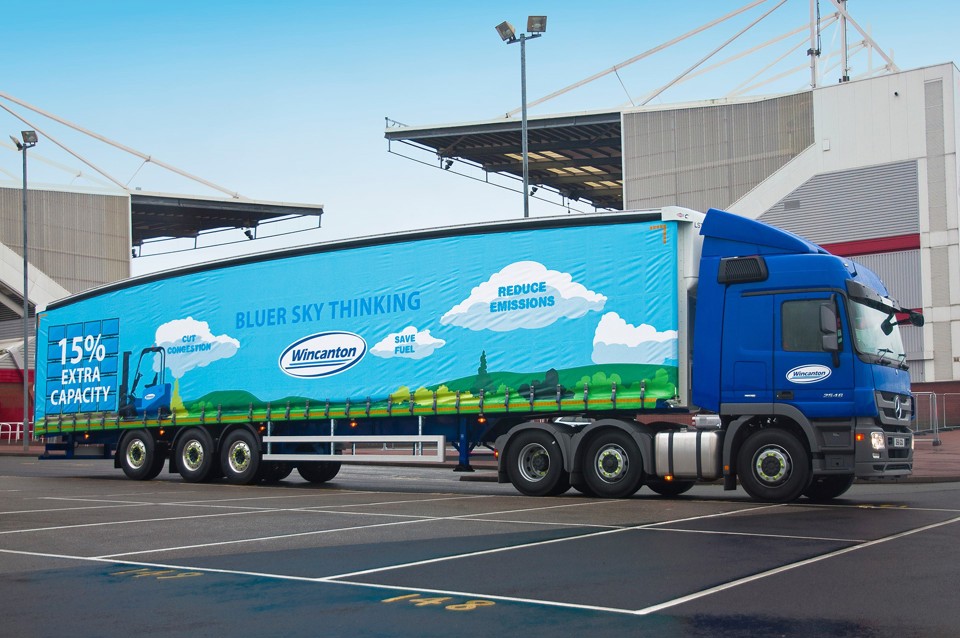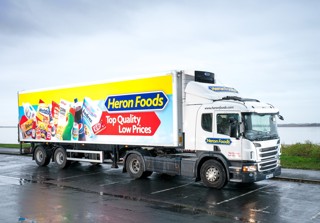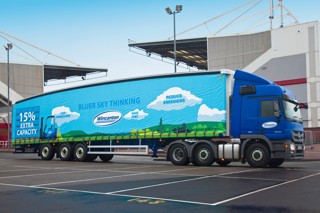Commercial fleets, which operate around 2,600 vehicles with longer semi-trailers (LSTs), have saved 33.5 million miles and 48,000 tonnes of CO2, equivalent to taking 20,000 cars off the road.
Use of the trailers, which are part of a trial that started in 2012, reduced journey numbers by one-in-12, on average, and saved 241 tonnes of nitrogen oxides (NOx).
The new data, published by the Department for Transport (DfT), also shows that LSTs, which are up to 2.05 metres longer than standard length trailers, were involved in 53% fewer personal injury collisions compared with standard-sized HGVs.
Following the release of these latest figures, the Government has proposed to end the trials early and, through a consultation, seek views on whether LSTs should be allowed to permanently operate on roads across the UK.
Transport secretary Grant Shapps said: “These trials clearly show the benefits for business and the environment of using longer trailers.
“By determining the next steps to get them on our roads permanently, we can benefit industry and our economy, boost safety and cut emissions.”
LONGER, NOT HEAVIER
While the trailers involved in UK trial are longer than existing HGV trailers, they cannot be heavier. The total weight of the trailer, the goods and the tractor unit must still be within the UK domestic weight limit of 44 tonnes.
They must also pass the turning circle test applied to the existing 13.6m trailers. To achieve this, LSTs usually have a steering rear axle.
By making the trailer two metres longer, it is possible to carry two more rows of pallets or three more rows of goods cages on each journey, compared with existing trailers.
The DfT says it differs from other approaches to freight carbon reduction – such as increasing engine efficiency or electric vehicles – in being available without the need for further significant technological and infrastructure development.
Phil Lloyd, head of engineering policy at Logistics UK, welcomed the Government announcement.
“An industry trial has shown the benefits to the environment and the economy on the use of LSTs, and with the ability to carry more goods per journey than traditional trailers, they present a cost-efficient, environmentally prudent alternative to current transportation options,” he said.
“It is good news that the Government has taken heed of the findings. If our industry can move the same amount of goods with fewer journeys, the environment, the economy and other road users will benefit.”
While the DfT estimates that LSTs have been involved in around 53% fewer personal injury collisions and casualties than the UK articulated HGV average, they fared even better on particular types of roads.
The DfT data showed LSTs had been involved in 92% fewer personal injury collisions, on average, when operating on roads in urban areas and 78% fewer when on minor roads.
Furthermore, the average number of damage incidents for non-LSTs is greater than that for LSTs by a factor of about eight.
REPORT FINDINGS
In the LST 2019 annual report, published this month, the DfT says: “We believe we now have sufficient quantitative data and other evidence to provide a robust evaluation response to all the key evaluation questions.
“In addition to the quantitative results, we have collated industry insights covering the issues considered, and measures taken, by real operators when adopting LSTs – focusing in particular on establishing an efficient and safe operation.”
By the end of 2019, the goods carried by LSTs in the trial were dominated by fast-moving consumer goods (low-cost products sold quickly) and other cage or pallet loads.
At least 68% of the distance travelled was between industrial locations (depots, distribution centres, supplier sites).
Meanwhile, trailers ran empty around 18% of the total distance travelled – much lower than the figure of around 30% for all articulated trailers.
More than half (57%) of the operators are running their trailers at or near their maximum efficiency.
This highest savings group is dominated by the movement of raw materials, industrial products and biomass/fuel.
These goods are often shipped in full loads only, commonly as a simple ‘full-out – empty-back’ loop.
Around a third (28%) of operators are in the average savings group, where a mixture of factors are driving the savings and variable trailer fill levels.
An example is some retail sector deliveries to stores, where the cargo sizes can be driven by just-in-time delivery to the store of exactly what is demanded – there being little or no stock held at stores.
The lowest performing group – about 16% of operators – includes cargo such as mail and parcels, where the quantity of goods loaded is often not determined by a process designed to fill trailers to the maximum level, but by time-tabled trailer departures; and cargo such as waste packaging, which may simply back-haul legs as a by-product of the main purpose of the trip.
Some of the lower performing operators, adds the DfT report, are cases where the trailer has been bought for use on a specific contract, which has then ended and new work has not been found.
In other cases, the trailer has simply not been usable on as wide a range of work, or at the loading levels that the operator had hoped for.
Outside of trial conditions and with a more active open market for LSTs, these operators may not have held on to their trailers, says the DfT report.
This article was first published in the November edition of Commercial Fleet.























Login to comment
Comments
No comments have been made yet.